I love digging in the dirt! It’s probably why I buy so many annuals every year- more digging! The one annual that I plant every year is the begonia. It always looks great from the road and provides the color I desire for that part of the landscape. We set out mid-morning to plant the begonias. I had gathered everything we needed to get started: flowers (begonias), trowels, mulch, root stimulator, water can, and gloves. I got started with all three girls helping but within minutes, two of them had disappeared. They had created a mud pile and began sculpting shapes out of the mud; I’m sure they thought it was much more fun than helping dear ole’ mom. Doesn’t she look proud in this picture!
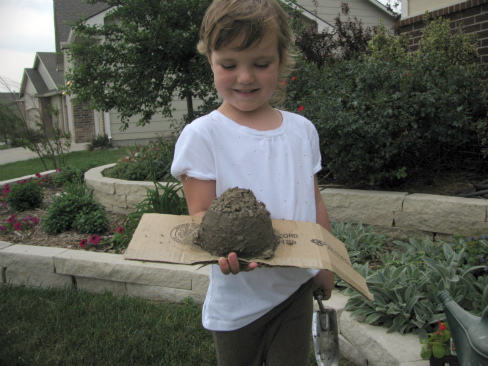
As I turned around to finish planting, I found my two- year-old pulling out the plants we had just planted. Yep, every begonia was lying on the ground with roots exposed. And you know she was wearing a great big smile that said, “Please don’t get mad at me, I was just helping!”
If I was to plant flowers without any help, the process would go something like this:
1. Purchase the plants. Taking note of their light requirements: full sun, part sun or shade.

2. Follow planting space guidelines. For example this label suggests nine inches apart. That means the next begonia I plant will be nine inches from the one I just planted.
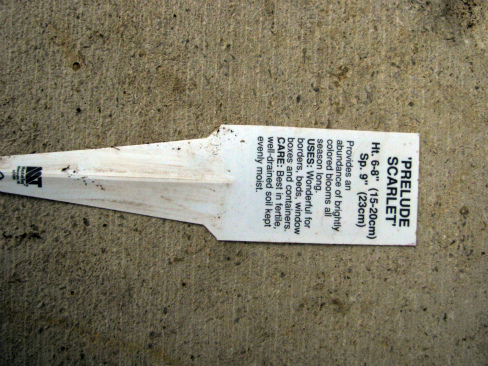
3. Removed the plant from container. Break up the base of the root ball with your fingers. This will help make the roots branch out into the soil.
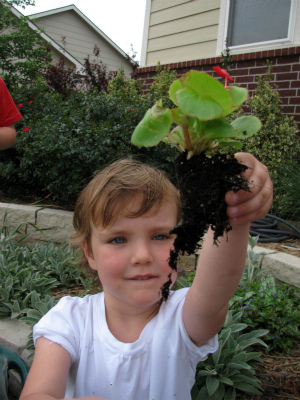
4. Dig the hole twice as wide and as deep as the root area.
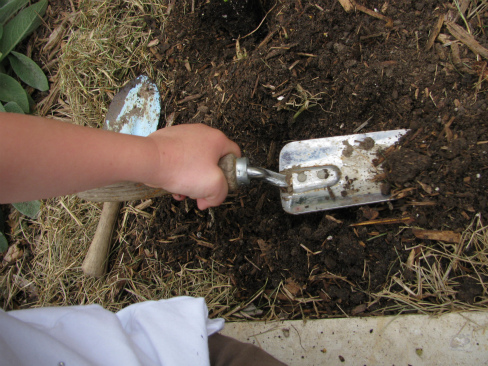
5. Set the plant even with the ground. Cover the root ball with soil and gently tamp the soil around the plant, removing any air pockets.
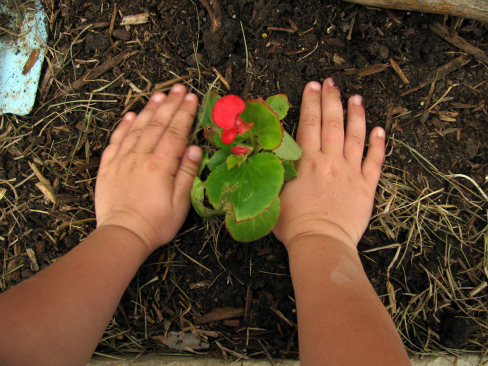
6. Water thoroughly with a mixture of water and root stimulator. Generally, root simulators are a mild formula of fertilizer that feeds the plant to assist in the development of strong roots and quick plant growth.
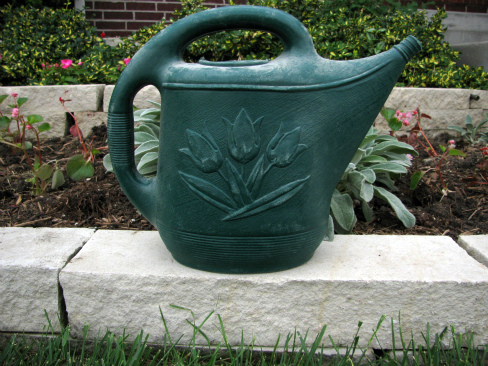
7. Add a layer of mulch around the plant. Mulch does three things for us: reduces weed growth, holds moisture and cools soil temperatures. Here I used grass clippings.
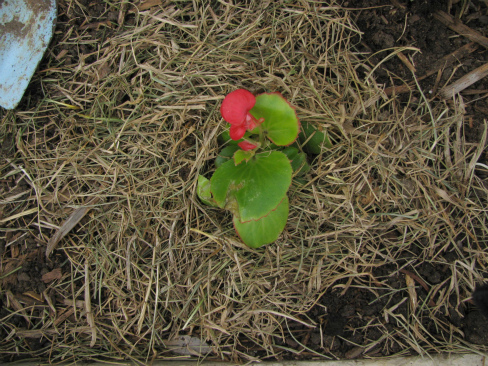
8. Remember it’s a living thing; it needs your attention in order to live and thrive.
And if you need extra help, I know a two-year-old that is more than willing!





